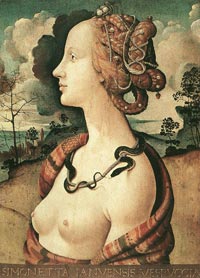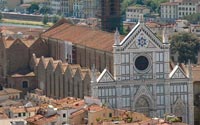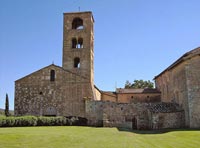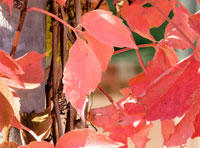| |
Piero di Cosimo |
| Piero di Cosimo (2 January 1462[1] – 1521[2]), also known as Piero di Lorenzo, was an Italian Renaissance painter. |
|
||
The Portrait of Simonetta Vespucci
|
||
| The Portrait of Simonetta Vespucci is a painting from c. 1480, which portrays noted Genoese beauty Simonetta Vespucci as Cleopatra with an asp around her neck. It is housed in the Musée Condé of Chantilly, France.[4] Simonetta is partly nude, and her rhythmic profile is accentuated by the black cloud placed behind it. She wears a gold necklace, around which two snakes coil, possibly an allusion to her death from consumption. Piero's art reflects his bizarre, misanthropic personality. He belonged to no school of painting. Instead, he borrowed frommany artists, incorporating elements of their style into his own idiosyncratic manner. 'Here, Piero di Cosimo has chosen a portrait type which was already outmoded by the time he came to paint it (c. 1520). The profile view may have been borrowed from a medal portrait used by Piero as a model, since Simonetta Vespucci, whose latinized name appears on the strip along the bottom of the painting, had died of consumption in 1476.[5] |
||
Selected works
* Portrait of Simonetta Vespucci (c. 1480) Oil on panel, 57 x 42 cm, Musée Condé, Chantilly, France |
||
| [1] The cassone (pl. cassoni) is a Renaissance marriage chest. Usually commissioned in twos, cassoni were important pieces of furniture in the Renaissance home, oftentimes the most expensive thing in the house. A cassone is an Italian chest large enough to normally be used directly from the floor of a room. It needs no stand, table, or brace. On average, they measure roughly 1.5 meters across, .5 meters tall, and .5 meters deep and can weigh several hundred pounds when loaded. According to the Encyclopedia Britannica, the cassone was typically a marriage chest, given to the bride and groom at the time of their wedding by the family of the bride. Often, the cassone will contain the bride’s dowry. Cassoni were traditionally made in pairs, and often were elaborately decorated, sometimes with the heraldry of the bride and the groom. The cassone itself was highly decorated. In the 15th century, they were most often painted, while heading into the 16th century, sculpted or intarsiated wood became the prefered medium. The painted cassoni had scenes from everyday life or from mythology, usually with a moral pointed at the bride. Other themes on the cassoni included battle scenes and themes from ancient mythology and literature. | 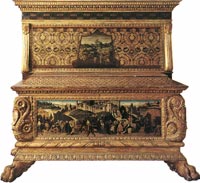 A cassone, known as the Nerli Cassone |
|||
Art in Tuscany | Italian Renaissance Cassoni paintings |
||||
|
||||
 |
||||
Podere Santa Pia |
Castiglioncello Bandini |
Monte Argentario | ||
Santa Croce, Firenze |
Cipresses between Montalcino and Pienza |
Sovicille |
||
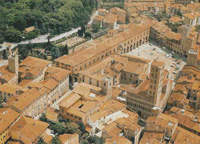 |
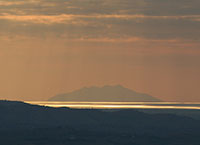 |
|||
Wines in southern Tuscany |
Arezzo |
Sunsets in Tuscany |
||
 |
||||
| Podere Santa Pia is immersed in the utmost quietness of the Alta Maremma and offers its guests breathtaking views over the Maremma hills, up to the Tyrrhenian coast and Monte Christo |
||||
| This article incorporates material from the Wikipedia article Piero di Cosimo published under the GNU Free Documentation License. Wikimedia Commons has media related to: Piero di Cosimo |
||||

